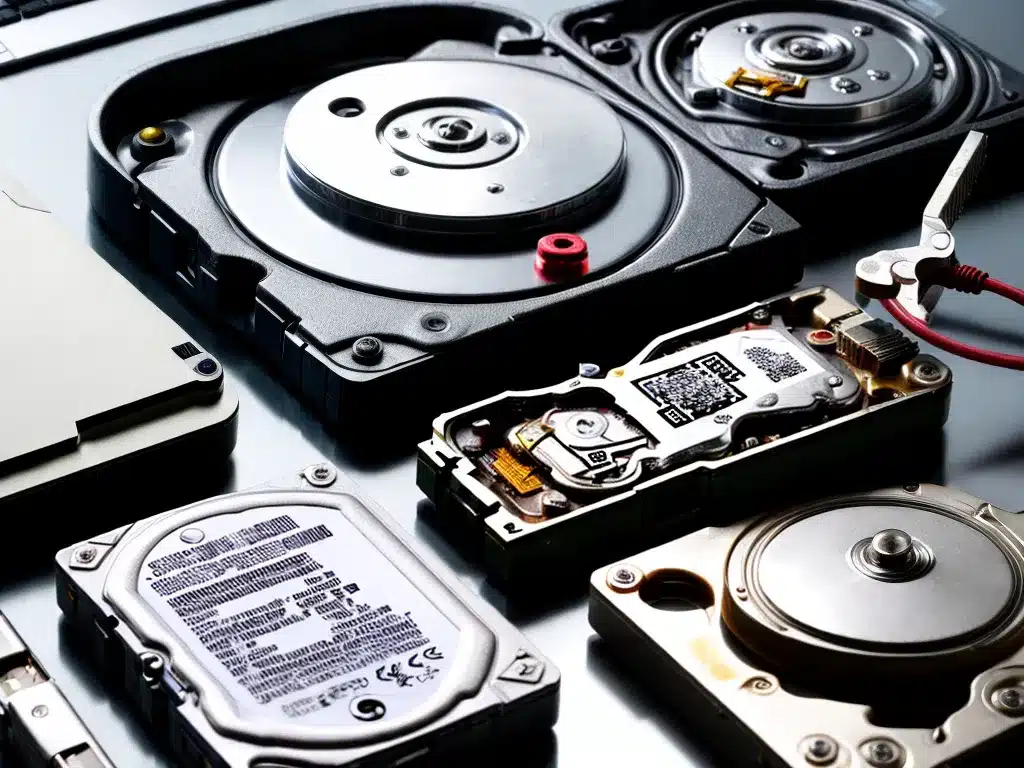
Introduction
Encrypting your hard drive is an important step to protect your sensitive data. However, forgetting the password can lead to huge problems, as you will be locked out from accessing any files. Thankfully, there are methods I can use to recover data from an encrypted drive, even without knowing the password. In this guide, I will provide an in-depth look at recovering files from an encrypted drive after forgetting the password.
Understanding Drive Encryption
Before looking at data recovery methods, it is important to understand how drive encryption works. There are two main types of encryption:
- Full disk encryption (FDE) – Encrypts the entire hard drive or storage device.
- File/folder encryption – Encrypts only specific files or folders.
Full disk encryption is more secure as everything is encrypted. With file/folder encryption, unencrypted areas are still vulnerable.
Encryption uses an algorithm to scramble data and make it unreadable. To decrypt and access the data again, the correct encryption key or password is required. Without this key, the encrypted data remains scrambled and inaccessible.
Once a drive is encrypted, any files written to it will be encrypted on the fly. The encryption key has to be entered on boot to allow the operating system and files to be accessed.
Challenges of Recovering Data from Encrypted Drives
Recovering data from an encrypted drive without the password is very challenging. Some key reasons for this include:
- The encryption algorithms used are intentionally complex to prevent access.
- Encryption keys are very long and random – it is almost impossible to guess them.
- Many encryption systems wipe keys after a certain number of failed password attempts.
- Encrypted data looks like random noise – it does not have a readable structure.
These factors mean that basic data recovery techniques do not work on encrypted drives. Specialized methods are required.
Recovery Methods When the Password is Forgotten
There are a handful of options I can try to recover data from an encrypted drive without the password:
Exploiting Encryption Software Flaws
Some encryption software can potentially have flaws or bugs in implementation that leave vulnerabilities. Security researchers may find and document ways to exploit these flaws to decrypt drives.
For example, flaws like using weak encryption algorithms, or improper handling of encryption keys. Successfully exploiting them requires high technical skill.
Using Encryption Backdoors
In some cases, encryption software vendors secretly build in backdoors that allow access to encrypted data without needing the password. These exist predominantly for lawful government access.
There are rare instances where encryption backdoor access tools have leaked publicly. With enough technical knowledge, I may be able to use them to unlock personal encrypted drives.
Brute Forcing / Dictionary Attacks
If the password used is weak, I may be able to decrypt the drive by brute forcing through possible passwords or using a password dictionary attack.
This involves trying millions of password permutations through special software. It is resource intensive and still unlikely to work on strong passwords.
Accessing Encryption Keys
If I can gain access to the stored encryption keys, I can decrypt the drive using them directly, bypassing the password.
Keys may potentially be recovered by:
- Accessing system memory – encryption keys are loaded into memory when booting. I can try dumping memory.
- Locating saved key files – some encryption tools store keys in files or the registry.
- Using a forensic disk editor – highly advanced editors may find remnants of keys.
Finding and properly utilizing encryption keys requires considerable expertise.
Repairing or Resetting the Boot Loader
Some encryption systems store the decryption keys in the boot loader. If I can repair or reset the damaged boot loader through advanced recovery tools, I may be able to boot the drive and access data again with a new password.
This requires an in-depth understanding of the encryption system boot process.
When All Else Fails – Manually Decrypting Data
If I exhaust all these options without success, the only method left is to manually decrypt the encrypted data. This involves:
- Dumping the encrypted drive data with a disk editor or forensic tool.
- Analyzing the recovered data to try identifying patterns and clues about the encryption algorithm used.
- Writing custom decryption scripts to test different decryption methods on the data dump.
- Checking results manually or with data analysis tools for signs of coherent data being uncovered.
This is a slow, arduous process requiring high encryption expertise. But patient, incremental testing of decryption algorithms offers a last chance of recovering data.
Final Thoughts
While challenging, it is sometimes possible to recover data from a drive encrypted with a forgotten password. Flaws in encryption software, backdoors, brute forcing simpler passwords, accessing encryption keys, and manual decryption offer potential options. To improve my chances of successful data recovery, I should utilize the services of an expert encryption data recovery company rather than attempting complex techniques myself. The most secure way to avoid this situation is to use strong passwords and securely back up encryption keys separate from the encrypted drive.
Conclusion
- Encryption scrambles drive data to prevent unauthorized access
- Without the password or encryption keys, encrypted data cannot be read
- Direct data recovery techniques do not work on encrypted drives
- There are ways to potentially crack or work around encryption without passwords
- Actually recovering data without passwords requires considerable expertise
- Avoiding forgotten password situations is best through secure key backups












